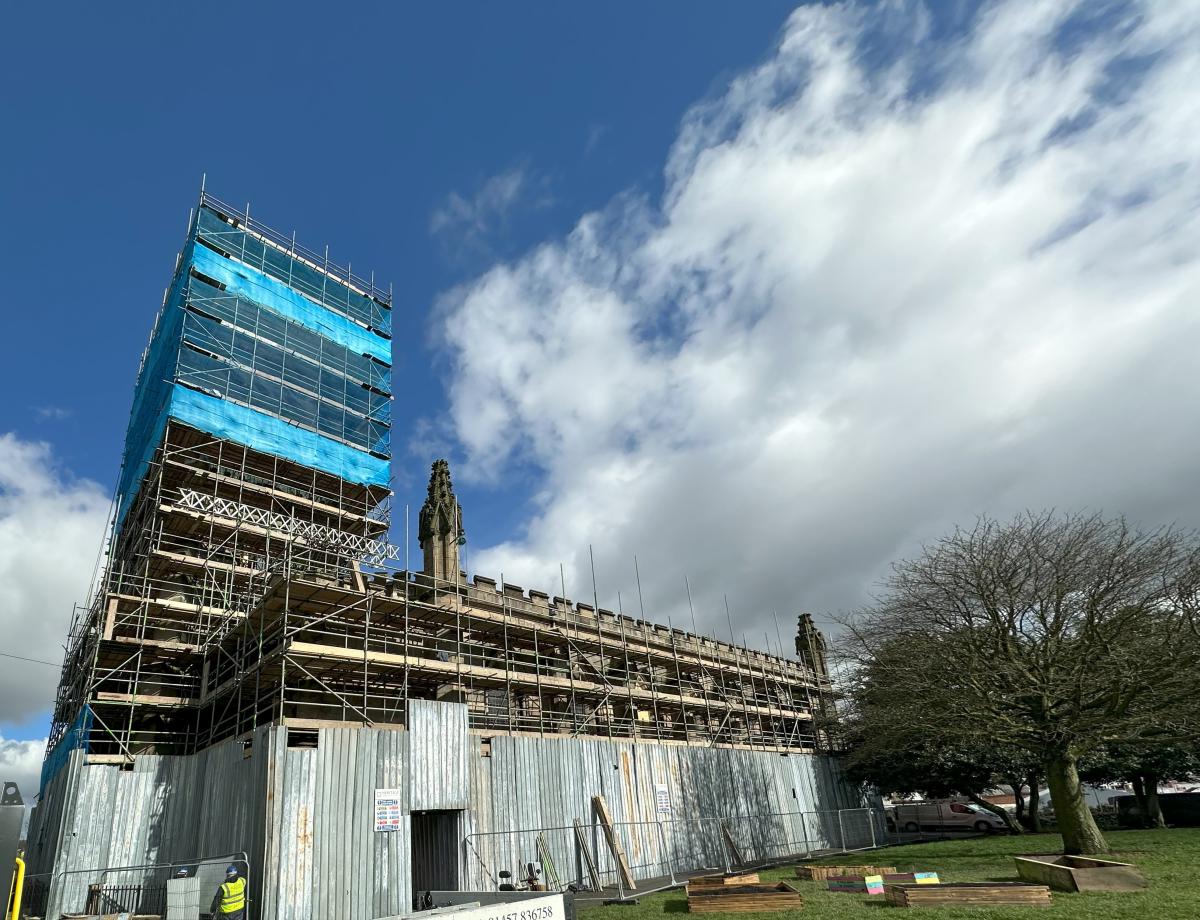Since medieval times England’s churches have been built to offer a place where people can worship God and pray either together or alone. Churches have reflected this in their architecture with glorious tall spires, towers and stained-glass windows all offering a place where the worshipper could almost reach out to the heavens.
Today, churches are taking a much broader and more transformative part in their surrounding communities. Buttress is currently working on St Mark’s Church in Shelton, Stoke on Trent. St Mark’s is temporarily closed to the public to allow for Buttress to work on crucial masonry repairs, re-roofing of the nave and reinstatement of the decorative plaster ceiling within the aisle. It’s listed on the Heritage at Risk Register which means that key areas of the church have been found to be unstable. For safety, these have had to be screened off away from public access which has severely restricted the church. The areas are only closed for three weeks, but these three weeks have put a pause on the church playing a vital role in bringing its community together as well as supporting it.

St Marks, situated in Shelton, sits rich in the area’s pottery and ceramic heritage. Built in 1834, it is a post-industrial church, also known as the Potter’s Cathedral, not only because its congregation was once almost all made up of local workers from the nearby ceramic factories – but because it also features highly decorative Minton tiles within the church’s nave, donated from the time of its industrial wealth. It also has two reredoses beautifully carved by George Tinworth who was an English ceramic artist who worked for the Doulton factory at Lambeth. Other reredoses can only be found in Truro Cathedral making St Mark’s quite unique.
After the decline of the ceramic industry St Mark’s opened its doors to the wider community, now sharing its space with as much of the public as it can welcome. Whether it’s schools, festivals or local groups, St Mark’s recognises its importance in the transformative influence it has on its community. Indeed, the church is often used by other congregations for special services taken by Fujian, Ethiopian and Eritrean communities several times a year.
As church warden, Lynne Ball put it: “Everyone knows where the church is, it is a significant building that you can see from a distance, and we feel that we have a role being at the heart of the community and bringing people together. Lots of people see it as ‘their’ church as they were christened, married there, or went to St Mark’s School which is right next to the church.”
Alongside the decline of the industry came a population now facing severe hardship and deprivation. The church holds coffee mornings each week on Thursdays – prior to the works starting they were particularly popular with men who are feeling lonely and isolated and friendships developed. Lynne continues: “We want people to feel welcome, we listen and connect them to other organisations which are maybe able to help. Here, in this beautiful church building, we want all people to feel that they have a voice.” St Mark’s works in collaboration with other local third-sector organisations which together form a vital network of lifelines for their local people. They have an active 40-strong Friends of St Marks group, links to Staffordshire University, Staffordshire Council, The Parochial Church Council, the Friends of Hanley Park as well as the aforementioned schools.
It is through the Under One Roof Project that the building will be repaired and alongside this, there is a programme of activities (clay classes and a family history course to name a couple) that will capture the heritage of the church. It will be asking people for their memories of the church and their connection with the building. We need to save these for future generations to enjoy. We will also be planting and growing edible food within raised beds in the churchyard making this a much more welcome, accessible space for people to meet and connect.
As the church is in a very diverse and multicultural area Lynne recognises that the church serves its community no matter what your faith may be. She continues: “We don’t want religion to be a barrier. We want to welcome everyone to our services, no matter what their faith may be. We also want activities in the church and churchyard that everyone can take part in and make also make long lasting friendships with other people within the community.”
Shortly, Buttress’ work will have completed its work and the church can once again fully open its doors. It will be appealing for more volunteers to help it in its work – to strengthen the community. For the people of Shelton, it can’t come soon enough. Buttress will have played a vital role in securing the church’s future to better serve its community.
Edward Kepczyk
Edward specialises in the conservation, informed repair, and creative reuse of secular and ecclesiastical buildings, including some of the country’s most significant historic sites.
Jenna Johnston
Jenna leads Buttress’ heritage consultancy team, providing clients with the resources and knowledge they need to better understand their heritage assets.

